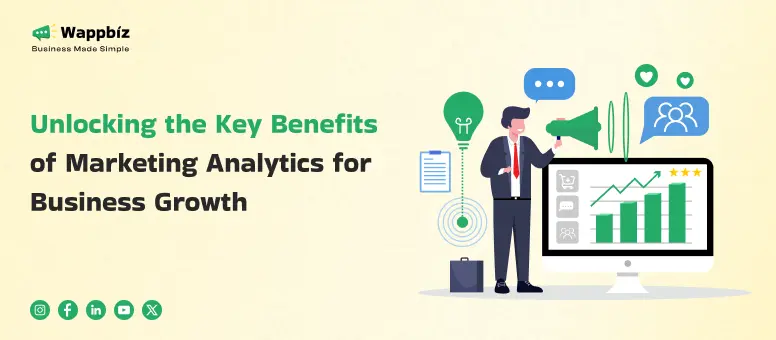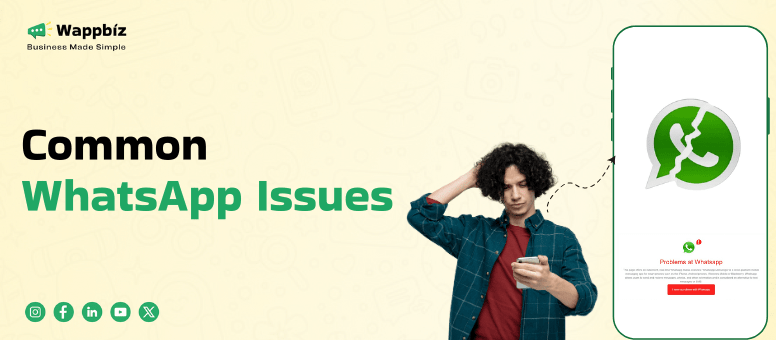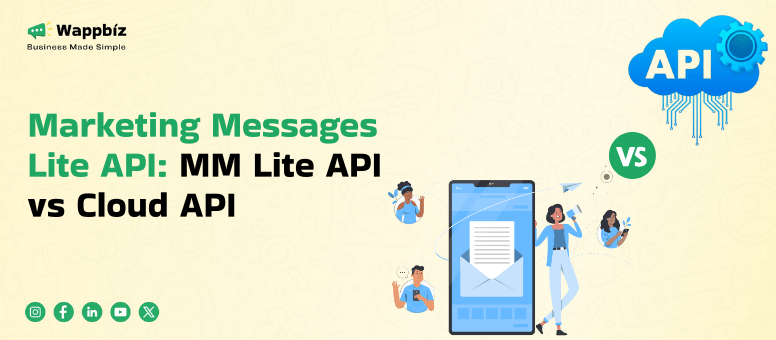Marketing analytics is a powerful tool that helps businesses understand the effectiveness of their marketing strategies. Marketers gain insights into customer behavior, campaign performance, and market trends by analyzing data from various campaigns. This data-driven approach allows companies to optimize their marketing efforts, target the right audience, and increase return on investment (ROI).
From tracking engagement rates to improving conversion rates, marketing analytics offers a comprehensive view that helps businesses make informed decisions, stay competitive, and grow effectively. Understanding these benefits can transform how companies plan and execute their marketing strategies.
What is Marketing Analytics?
Marketing analytics is all about using data to measure, manage, and optimize marketing performance. It helps businesses track what’s working—like which ads, channels, and products drive the most engagement—so they can make smart, data-driven decisions. By analyzing consumer behavior and campaign results across social media, websites, and email, businesses can refine strategies, personalize customer experiences, and boost ROI. In short, it’s the key to turning marketing insights into growth and success.
Importance of Marketing Analytics
In today’s data-driven world, marketing analysts are essential for turning raw data into actionable strategies. They’re the experts behind effective marketing operations, using their skills to uncover patterns, trends, and insights that guide businesses toward smarter decisions.
Why Marketing Analysts Matter:
- Data-Driven Decision Making
- Marketing analysts remove the guesswork from marketing strategies by providing concrete evidence on what’s working and where adjustments are needed, helping businesses make informed and impactful decisions.
- Understanding Customer Behavior
- By analyzing customer data, marketing analysts gain insights into purchasing habits and preferences, allowing businesses to create personalized campaigns that resonate with their audience, increasing engagement and conversions.
- Optimizing Campaigns
- Analysts continuously track and measure the performance of marketing campaigns across different channels, identifying the most effective ones and fine-tuning strategies to maximize ROI and efficiency.
- Forecasting Trends
- Beyond analyzing past data, marketing analysts use predictive analytics to forecast future trends, helping businesses stay ahead of competitors by anticipating customer behavior and market shifts.
- Enhancing Business Growth
- By aligning marketing strategies with data insights, marketing analysts ensure that efforts are focused and effective, minimizing wasted resources and driving business growth through efficient marketing execution.
In essence, marketing analysts are the navigators of modern marketing, transforming data into strategies that lead to growth and success. Without them, businesses would be left guessing, missing out on the potential that data offers.
Types of Marketing Analytics
To effectively leverage marketing analytics, businesses must understand the different types of data they can access. Marketing data is gathered from various sources and falls into three main categories: first-party data, second-party data, and third-party data. Each type offers unique insights that, when combined, provide a comprehensive view of the marketing landscape.
1. First-Party Data
- What It Is: First-party data is information collected directly by businesses from their own audience and customers. This includes data from website analytics, email campaigns, purchase history, and customer feedback.
- Why It’s Valuable: It is the most accurate and reliable type of data since it comes directly from your interactions with your customers. First-party data is essential for personalizing marketing efforts and gaining deep insights into customer behavior.
- Examples: website visitor behavior, email open and click-through rates, sales and transaction data, and data from loyalty programs.
2. Second-Party Data
- What It Is: Second-party data is essentially another company’s first-party data shared through a partnership. This data is accessed when businesses form strategic alliances and decide to exchange insights.
- Why It’s Useful: It allows businesses to enhance their own data sets with additional insights from a similar audience, expanding their reach and improving targeting accuracy without relying on third-party sources.
- Examples: A collaboration with a retail chain might provide access to their customer loyalty program data or purchasing behavior that aligns with your target audience.
3. Third-Party Data
- What It Is: This data is gathered by organizations that do not have a direct relationship with your customers. These third parties aggregate information from various sources and sell it to businesses for broader market insights.
- Benefits and Limitations: While third-party data offers a broader market overview and access to larger audiences, it may not be as precise or reliable as first-party data. Privacy regulations, such as GDPR, have also made using third-party data more challenging and restricted.
- Examples: demographic information from data vendors, industry market reports, and aggregated data from social media platforms.
Combining the Types of Marketing Data
By integrating these different types of data, businesses can develop a comprehensive marketing strategy. Each data type contributes unique insights—first-party data provides accuracy, second-party data expands reach, and third-party data offers a broader market perspective. Together, they allow businesses to target the right audience, personalize campaigns, and measure success with greater precision.
15 Benefits of Marketing Analytics
In today’s fast-paced digital world, businesses have access to vast amounts of data, but data alone isn’t enough to drive success. Marketing analytics is the secret sauce that turns numbers into meaningful insights, guiding companies to optimize campaigns, enhance customer experiences, and boost sales. By embracing marketing analytics, businesses can make well-informed, strategic decisions that pave the way for measurable growth. Here’s a deep dive into 15 compelling benefits of marketing analytics and why it’s a must-have for businesses today.
1. Better Decision-Making Through Data
One of the most significant advantages of marketing analytics is its ability to convert complex data into actionable insights. Rather than relying on intuition or guesswork, businesses can analyze data from multiple channels—like social media, email, and website traffic—to understand what’s working and what’s not. With this information, companies can make informed decisions that align with their goals and strategies. It’s like having a roadmap that guides you, ensuring that every move you make is backed by solid evidence.
2. Improved ROI (Return on Investment)
Every business wants to make the most out of its marketing budget, and marketing analytics is the key to achieving this. By tracking the real-time performance of campaigns, companies can identify which strategies yield the highest returns and allocate resources more effectively. For instance, if a particular ad campaign is driving conversions, businesses can shift more budget toward it, maximizing ROI while minimizing wasted spend on less effective tactics. It’s all about smart, data-driven spending that delivers results.
3. Personalized Customer Experiences
Customers today expect personalized interactions from brands. Marketing analytics helps businesses meet these expectations by providing insights into customer behavior and preferences. Companies can track customer journeys and tailor their marketing efforts—like sending personalized emails, offers, or ads—based on individual interests. This not only enhances customer satisfaction but also builds loyalty, as customers feel understood and valued. It’s about creating meaningful connections that lead to long-term relationships.
4. Optimized Campaigns
Imagine having the ability to adjust your marketing campaigns on the fly to get the best results. Marketing analytics makes this possible. By continuously monitoring key metrics such as click-through rates (CTR), conversion rates, and engagement levels, businesses gain insights into what aspects of a campaign are successful and which need tweaking. This data-driven approach allows for real-time optimization, ensuring that campaigns are constantly evolving to meet customer needs and business goals. It’s a cycle of continuous improvement that leads to more effective marketing over time.
5. Understanding the Customer Journey
Knowing how a customer interacts with your brand from the moment they first hear about you to when they make a purchase is crucial. Marketing analytics maps out these touchpoints, providing a comprehensive view of the customer journey. This helps businesses refine their marketing efforts at each stage, guiding customers smoothly through the sales funnel. By understanding these pathways, companies can deliver the right message at the right time, increasing the likelihood of conversions and building stronger relationships.
6. Enhanced Forecasting and Planning
Marketing isn’t just about looking at what’s happening now; it’s also about planning for the future. By leveraging historical data, marketing analytics allows businesses to predict trends and forecast future outcomes. This predictive analysis helps companies plan campaigns with greater accuracy, ensuring they’re ready to meet customer demands and adapt to market changes. When businesses know what to expect, they can strategize more effectively, putting them ahead of the curve.
7. Effective Resource Allocation
Every business wants to use its resources efficiently, and marketing analytics plays a critical role in achieving this. By providing insights into which campaigns and channels perform best, it guides businesses in allocating their budgets and efforts where they’ll have the most impact. Rather than spreading resources thinly across multiple strategies, companies can focus on the ones delivering results. This ensures that time, money, and effort are used productively, maximizing the effectiveness of marketing activities.
8. Enhanced Customer Retention
Acquiring new customers is important, but retaining existing ones is often more valuable. Marketing analytics doesn’t just help businesses attract new customers; it also plays a crucial role in keeping current customers engaged. By analyzing customer behavior, preferences, and feedback, businesses can create personalized retention strategies, such as loyalty programs or exclusive offers. Proactively addressing customer needs based on data not only keeps them satisfied but also encourages repeat business, which is essential for long-term growth.
9. Identifying New Market Opportunities
Marketing analytics isn’t just about understanding current customers; it’s also about spotting new opportunities. By analyzing trends and patterns, businesses can identify emerging customer preferences, shifts in market demand, or even untapped markets that align with their offerings. With this insight, companies can adapt their strategies to seize these opportunities, staying ahead of competitors and expanding their market reach. It’s about being proactive rather than reactive, ensuring businesses are always a step ahead.
10. Reduced Customer Acquisition Costs
When you know exactly which strategies work, you can focus your efforts precisely, reducing the cost of acquiring new customers. Marketing analytics helps businesses identify the most effective channels and tactics, allowing them to target audiences more efficiently. This targeted approach not only boosts conversions but also minimizes spending on ineffective strategies. By maximizing the impact of every marketing dollar, businesses can lower their customer acquisition costs and achieve better results.
11. Measuring Campaign Performance in Real-Time
Marketing is dynamic, and campaigns can shift quickly. The beauty of marketing analytics is that it offers real-time tracking, enabling businesses to monitor the performance of their campaigns as they happen. This allows for immediate adjustments, such as refining ad copy, changing visuals, or shifting budgets to higher-performing ads. With real-time insights, companies can ensure their campaigns stay on track, meeting objectives without waiting for post-campaign analysis.
12. Competitive Analysis
In a crowded marketplace, knowing what your competitors are doing is vital. Marketing analytics provides tools for tracking competitor campaigns, analyzing their positioning, and identifying their strengths and weaknesses. By understanding the competition, businesses can refine their strategies, capitalize on market gaps, and position themselves more effectively. It’s about using data not only to understand your own business but also to gain a competitive edge.
13. Cross-Channel Integration and Consistency
With so many channels available—social media, email, websites, and more—maintaining consistency across them is crucial. Marketing analytics integrates data from these multiple sources, providing a unified view of campaign performance. This unified approach ensures that messaging remains consistent and effective across platforms, allowing businesses to deliver a cohesive brand experience that strengthens their presence and engages audiences.
14. Clear Insights into Audience Demographics
Understanding your audience is the foundation of any successful marketing strategy. Marketing analytics tools provide detailed demographic information such as age, gender, location, and interests. With these insights, businesses can effectively segment their audience and create campaigns that resonate with each group. Targeted messaging leads to higher engagement rates and ensures that marketing efforts are as relevant as possible, making campaigns more successful.
15. Increased Agility and Flexibility
Marketing analytics gives businesses the power to monitor campaigns in real-time and quickly pivot based on the data they receive. Instead of waiting for weeks or months to see results, companies can make rapid adjustments, testing new approaches and refining their strategies. This agility allows businesses to stay ahead of market trends, adapt to changing customer needs, and respond effectively to competition, giving them a significant advantage in the marketplace.
Conclusion
Marketing analytics is the driving force behind successful, data-driven marketing strategies. From improving ROI and customer retention to identifying new market opportunities and optimizing campaigns, the benefits of marketing analytics are vast and impactful. By embracing these insights, businesses can refine their strategies, engage customers more effectively, and achieve their marketing goals with precision and efficiency.

You Next Step
If you’re ready to take your marketing strategy to the next level with data-driven insights and optimize every aspect of your campaigns, start exploring the best marketing analytics tools available. Platforms like Wappbiz offer comprehensive solutions designed to help businesses harness the power of analytics for better decision-making and greater success, ensuring you stay ahead of the competition. Don’t wait—make data work for you and see the difference it makes in your marketing results
FAQs
What is marketing analytics and its importance?
Marketing analytics is the process of tracking and analyzing data to enhance campaigns and boost ROI, making it crucial for developing effective, data-driven marketing strategies.
What tools are best for marketing analytics?
Popular tools include Google Analytics, HubSpot, and SEMrush, all of which provide comprehensive features for monitoring and improving marketing performance.
How do companies use marketing analytics?
Companies utilize marketing analytics to gain insights into customer behavior, measure campaign outcomes, and refine strategies for better engagement and higher conversions.
What are the key metrics to measure in marketing analytics?
Essential metrics include conversion rates, customer acquisition costs, click-through rates (CTR), and ROI to assess the success and effectiveness of marketing campaigns.






















